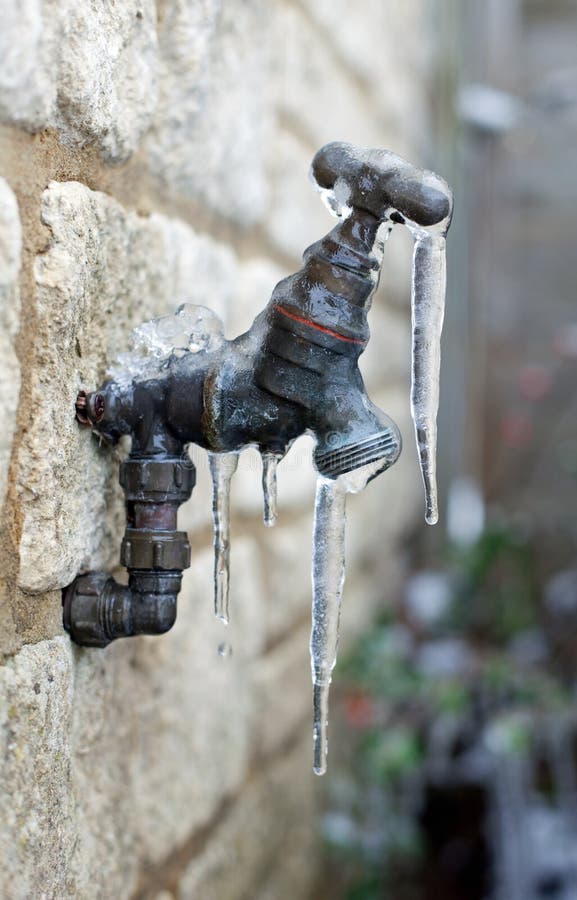How do you feel with regards to 6 Ways to Prevent Frozen Pipes?

Cold weather can ruin your plumbing, specifically by freezing pipes. Here's how to avoid it from happening and what to do if it does.
Intro
As temperature levels decline, the risk of frozen pipes boosts, potentially resulting in costly fixings and water damages. Recognizing just how to stop frozen pipelines is essential for homeowners in cool environments.
Comprehending Frozen Pipelines
What causes pipes to ice up?
Pipes ice up when revealed to temperature levels below 32 ° F (0 ° C) for prolonged durations. As water inside the pipelines ices up, it expands, taxing the pipeline walls and potentially triggering them to burst.
Threats and damages
Frozen pipes can cause water system disruptions, property damages, and expensive fixings. Ruptured pipes can flooding homes and cause comprehensive structural damage.
Indicators of Frozen Pipeline
Identifying frozen pipelines early can stop them from breaking.
Just how to identify frozen pipelines
Try to find lowered water circulation from taps, unusual smells or noises from pipelines, and noticeable frost on revealed pipes.
Avoidance Tips
Insulating at risk pipes
Wrap pipes in insulation sleeves or make use of warm tape to protect them from freezing temperatures. Concentrate on pipes in unheated or external locations of the home.
Home heating techniques
Maintain indoor spaces appropriately warmed, especially locations with pipes. Open cupboard doors to permit cozy air to distribute around pipelines under sinks.
Safeguarding Outside Pipes
Garden hoses and outside taps
Detach and drain pipes yard pipes before winter season. Install frost-proof spigots or cover outdoor taps with insulated caps.
What to Do If Your Pipes Freeze
Immediate actions to take
If you presume frozen pipes, maintain faucets open to soothe stress as the ice thaws. Utilize a hairdryer or towels soaked in warm water to thaw pipelines slowly.
Long-Term Solutions
Architectural changes
Consider rerouting pipes away from exterior walls or unheated areas. Include extra insulation to attic rooms, cellars, and crawl spaces.
Upgrading insulation
Buy top notch insulation for pipelines, attics, and wall surfaces. Proper insulation helps maintain consistent temperatures and decreases the threat of icy pipelines.
Conclusion
Preventing icy pipelines requires positive steps and quick actions. By recognizing the reasons, indications, and safety nets, homeowners can shield their plumbing throughout cold weather.
6 Proven Ways to Prevent Frozen Pipes and Protect Your Home
Disconnect and Drain Garden Hoses
Before winter arrives, start by disconnecting your garden hoses and draining any remaining water. Close the shut-off valves that supply outdoor hose bibs and leave the outdoor faucet open to allow any residual water to drain. For extra protection, consider using faucet covers throughout the colder months. It’s also important to drain water from any sprinkler supply lines following the manufacturer’s directions.
Insulate Exposed Pipes
Insulating your pipes is an effective way to prevent freezing. Pipe insulation is readily available at home improvement stores and is relatively inexpensive. Pay close attention to pipes in unheated areas such as the attic, basement, crawl spaces, or garage. Apply foam insulation generously to create a buffer against the cold. You can also wrap your pipes in heat tape or thermostat-controlled heat cables for added warmth.
Seal Air Leaks
Inspect your home for any cracks or openings that could let in cold air. Seal any holes around the piping in interior or exterior walls, as well as the sill plates where your home rests on its foundation. Additionally, make sure to keep your garage door closed unless you’re entering or exiting. Leaving it open creates a significant air leak that can lead to frozen pipes.
Allow Warm Air Circulation
During cold snaps, it’s essential to allow warm air to circulate evenly throughout your home. Leave interior doors ajar to promote better airflow. Open kitchen and bathroom cabinets to help distribute heat consistently around the rooms. If you have small children or pets, be sure to remove any household chemicals or potentially harmful cleaners from open cabinets for safety.
Let Faucets Drip
A small trickle of water can make a big difference in preventing ice formation inside your pipes. When temperatures drop significantly, start a drip of water from all faucets served by exposed pipes. This continuous flow helps prevent the water from freezing. Additionally, running a few faucets slightly can relieve pressure inside the pipes, reducing the chances of a rupture if the water inside does freeze.
https://choateshvac.com/6-proven-ways-to-prevent-frozen-pipes-and-protect-your-home/

As a serious reader on How to prepare your home plumbing for winter weather, I figured sharing that excerpt was beneficial. Are you aware of another person who is fascinated about the topic? Feel free to promote it. Thanks a bunch for your time. Don't hesitate to visit our blog back soon.
Book Today